Which National Flags Feature A Sun In Their Design?
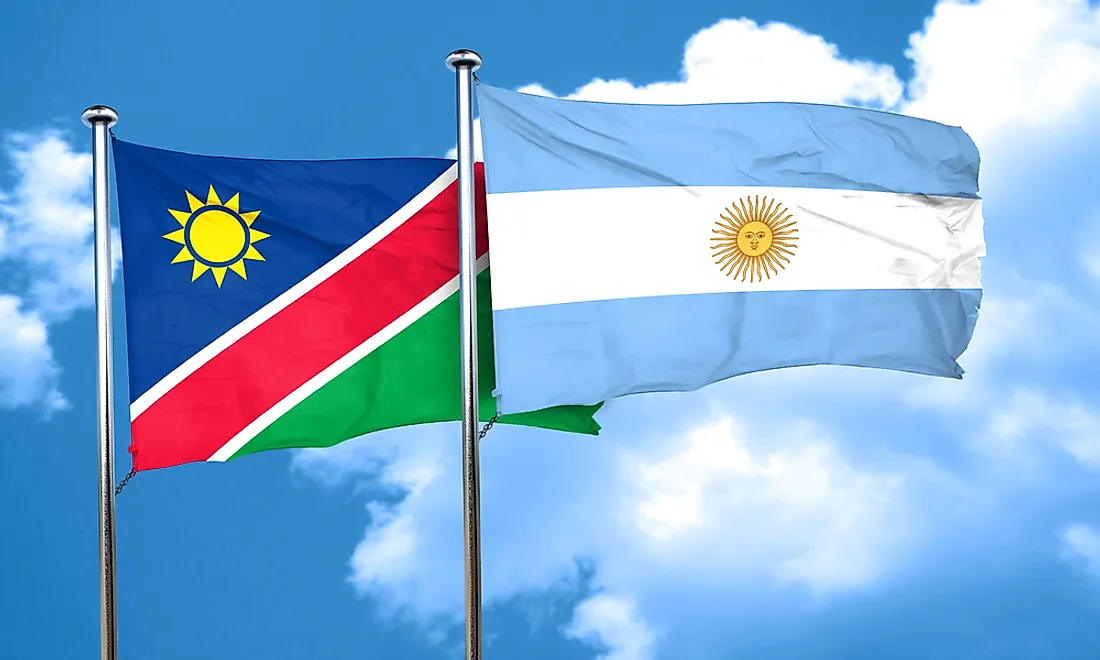
Country flags have varying designs with all of them being unique in their own right. Some feature common signs and symbols that may mean a lot to those countries while others use unique features in the design. Among the flag designs with common symbols include those that have an image of the sun. These flags include those of nations like Argentina, Japan, Niger, Nepal, Malawi, Republic of China (Taiwan), Uruguay, Rwanda, Namibia, Bangladesh, and many others.
Argentina
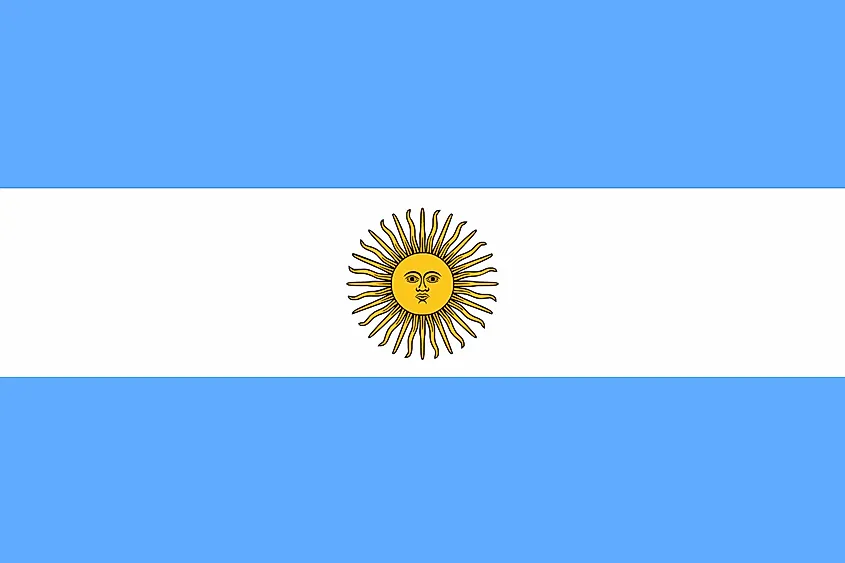
Argentina’s flag features three horizontal bands with equal height. The middle band is white while the outer two on either side are baby blue in color. In the middle of the white band, there is an illustration of a golden sun. The original flag was adopted in 1812, while the current one was adopted in 1861 with standardization taking place in 2012. The official flag has the image of the sun while the unofficial one does not.
Bangladesh
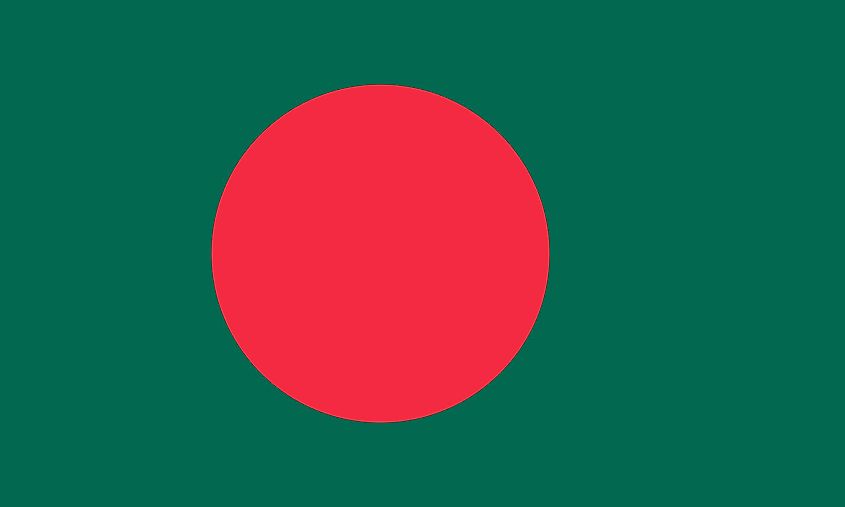
The nation’s flag was accepted in 1972 and it features a green background with a red disc shape at the center. The disc is symbolic of the sun as well as the blood that was shed during the struggle for independence. The lush vegetation of Bangladesh is represented by the green.
Republic of China (Taiwan)
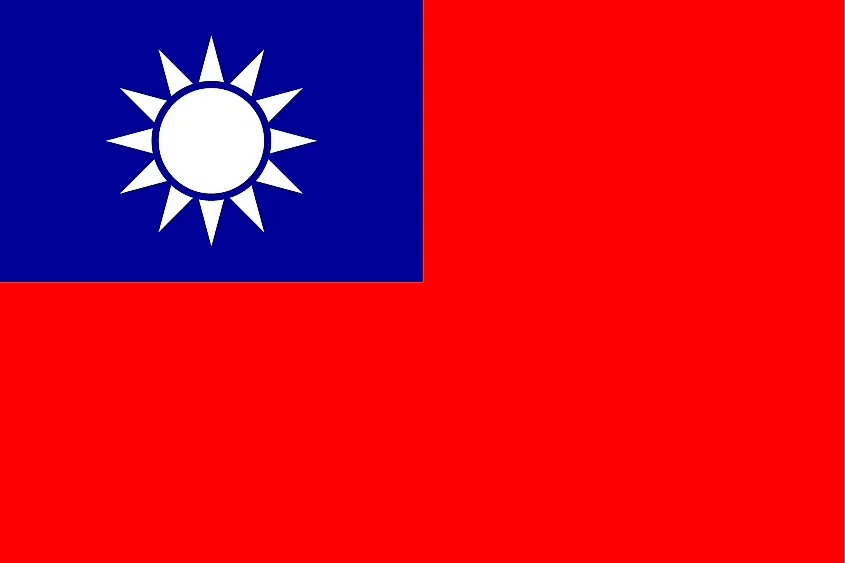
This flag was officially approved of on January 1, 1928 by China with Taiwan following suit on October 25, 1945. The flag is red while the top left corner of the flag is blue. An image of a white sun with twelve rays lies on top of the blue background. Twelve is a symbol of the number of months and a traditional form of time-keeping. The red is for the blood spilt by revolutionaries, white for peace, and the blue stands for nationalism.
Rwanda
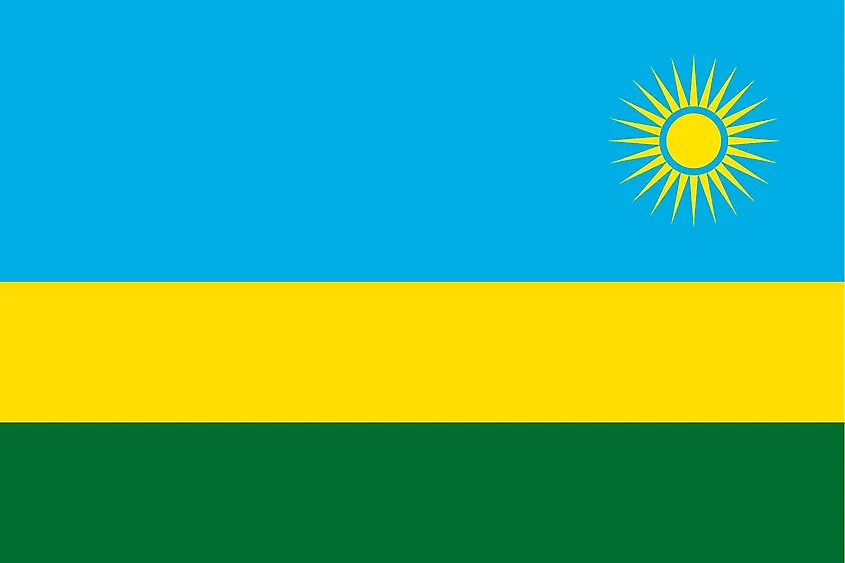
Rwanda’s flag bears four colors: two shades of yellow, green, and blue. All three colors are in three bands with blue at the top followed by standard yellow in the middle and then green at the bottom. At the top right corner, in the blue band, is an image of a “sun yellow” sun. The blue, standard yellow, and green bands stand for peace, economic advancement, and hope for prosperity respectively. The flag is relatively “young” as it was adopted on October 25, 2001.
Namibia
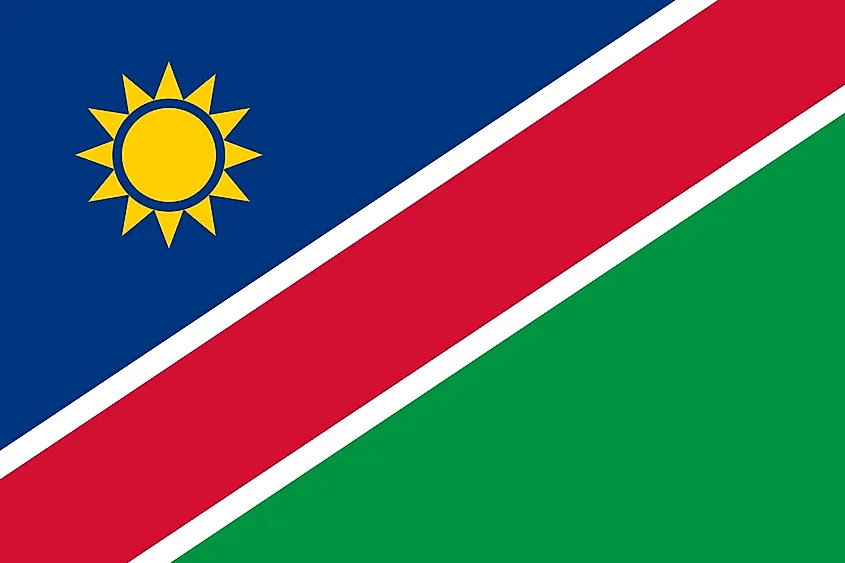
After attaining independence from South Africa, the state of Namibia adopted their flag on March 21, 1990. The flag of Namibia is made up of three diagonal bands with a red band in the middle, the green band on the right of the red one while the blue one is to the left of the red one. The blue stripe bears an image of a golden sun with twelve points. On either side of the red band, there are narrow bands of white symbolizing peace. Red is for the people, green for vegetation, while blue is symbolic of the sky and the ocean.
Uruguay
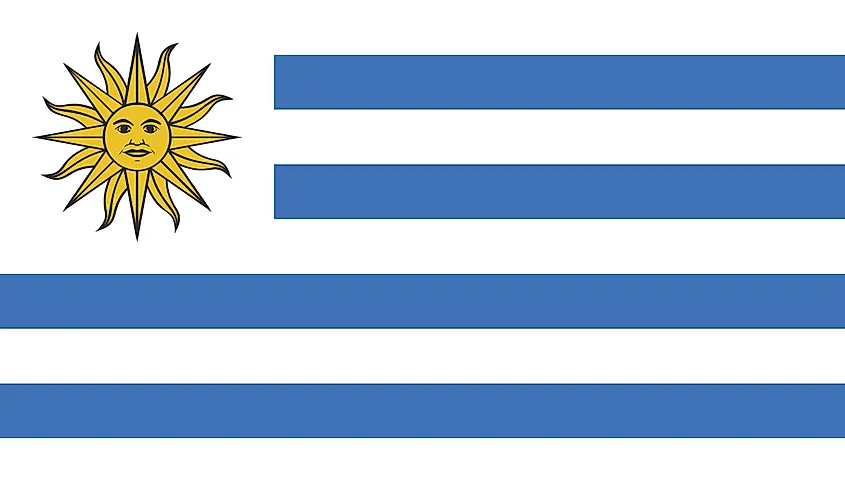
This flag is made up of nine horizontal stripes of alternating white and blue with a white stripe beginning at the top. An image of the sun with sixteen rays is at the top left position against a white background.











